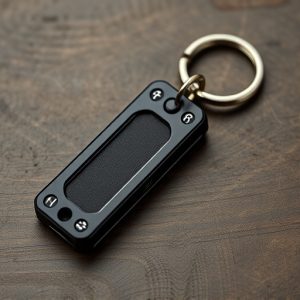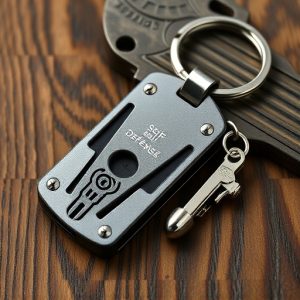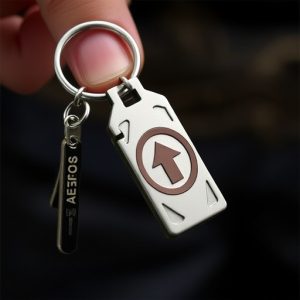Tactical Keychain Alarm Legal Guide: Carry Rules & Best Practices
Understanding state laws regarding tactical keychain alarms with lights is crucial for citizens seek…….
Understanding state laws regarding tactical keychain alarms with lights is crucial for citizens seeking self-protection. Each U.S. state has unique regulations on carrying such tools, which vary by age restrictions, permit requirements, and public spaces. Researching your state's guidelines and handling these devices safely is essential to comply with the law. Tactical keychains offer discretion, alarm deterrents, and light in low-light conditions, but their primary role is deterrence, not prolonged self-defense. Practice usage, test functionality regularly, and stay within legal limits for maximum personal protection.
“Defensive keychains equipped with alarms and lights have emerged as popular personal safety tools. However, navigating legal carry guidelines varies across states. This comprehensive guide explores the intricacies of tactical keychain alarm laws, highlighting key features to look for in these compact self-defense devices. We’ll delve into legal considerations, best practices for carrying, and ensure you’re informed about your rights when choosing a tactical keychain alarm with light as a proactive safety measure.”
- Understanding State Laws on Defensive Keychains
- Key Features of a Tactical Keychain Alarm With Light
- Legal Considerations and Carry Guidelines
- Best Practices for Carrying a Defensive Keychain Alarm
Understanding State Laws on Defensive Keychains
Understanding state laws regarding defensive keychains, such as tactical keychains with alarms and lights, is essential for every citizen looking to protect themselves. Each state in the U.S. has its own set of regulations surrounding the carry of self-defense tools, including keychains designed for safety. These laws vary widely based on factors like age restrictions, permit requirements, and public versus private spaces.
For example, some states allow open carry of tactical keychains without a permit, while others may mandate a concealed carry permit or specific circumstances for legal use. It’s crucial to research your state’s specific guidelines to ensure compliance with the law. Moreover, understanding these regulations is only the first step; safe and responsible handling of any self-defense tool, including a tactical keychain alarm with light, is paramount to effective protection.
Key Features of a Tactical Keychain Alarm With Light
A tactical keychain alarm with light is a compact yet powerful self-defense tool designed for those who want to enhance their personal safety. Key features include an integrated alarm that can be triggered manually or through impact, emitting a loud sound to deter potential attackers. The built-in light, often LED, provides visibility in low-light conditions, allowing users to assess their surroundings and navigate safely. These keychains are typically made of durable materials like high-strength steel or aluminum, ensuring they withstand rigorous use. Many models also offer adjustable attachment options, making them compatible with various key rings or bags, and some even include additional functions such as a window breaker or multi-tool tools for added versatility.
The combination of an alarm and light makes this keychain ideal for everyday carry, offering peace of mind in uncertain situations. Its small size allows it to be easily overlooked by would-be thieves, while its loud alarm and bright light serve as effective deterrents when needed. With a tactical keychain alarm with light, individuals can take control of their safety without compromising convenience or mobility.
Legal Considerations and Carry Guidelines
When considering carrying a tactical keychain alarm with light, it’s crucial to understand the legal considerations and specific guidelines within your state or region. Each jurisdiction has its own set of rules regarding self-defense tools like keychains with alarms, dictating where and how they can be carried legally. These regulations are designed to balance personal safety with public safety, ensuring that citizens can protect themselves without causing harm unnecessarily.
In many states, a tactical keychain alarm with light is legal as long as it’s not used in a threatening or aggressive manner. Some areas may have specific restrictions on the type of alarm allowed, power output, or even the presence of a light. It’s essential to check local laws and any additional requirements from your state’s department of public safety or similar authority to ensure compliance. This includes understanding where you can carry your device—for example, in your vehicle, at home, or while traveling—and any potential restrictions on public spaces like schools, courts, or places of worship.
Best Practices for Carrying a Defensive Keychain Alarm
When carrying a tactical keychain alarm with light, safety should always be the top priority. Ensure your device is fully charged before leaving home or engaging in any activity where it might be needed. Regularly test the alarm and flashlight to verify their functionality, as a failed device could leave you vulnerable. Keep your keychain alarm accessible yet discreet; avoid showing it off or drawing unnecessary attention, as this could alert potential threats.
Remember that the primary purpose of a defensive keychain alarm is to deter an attacker and provide a momentary distraction. It should not be relied upon for prolonged self-defense or escape. Practice using the alarm in various scenarios to develop muscle memory. Familiarize yourself with local laws regarding personal alarms, and always carry your keychain alarm responsibly and within legal limits.
Understanding state laws regarding defensive keychains is crucial before considering legal carry. A tactical keychain alarm with light can be an effective self-defense tool, but it’s essential to follow established guidelines for safe and lawful carrying. By adhering to best practices, you can ensure your safety without endangering others. Always stay informed about local regulations and exercise responsible ownership of any defensive equipment, including tactical keychains with lights.


